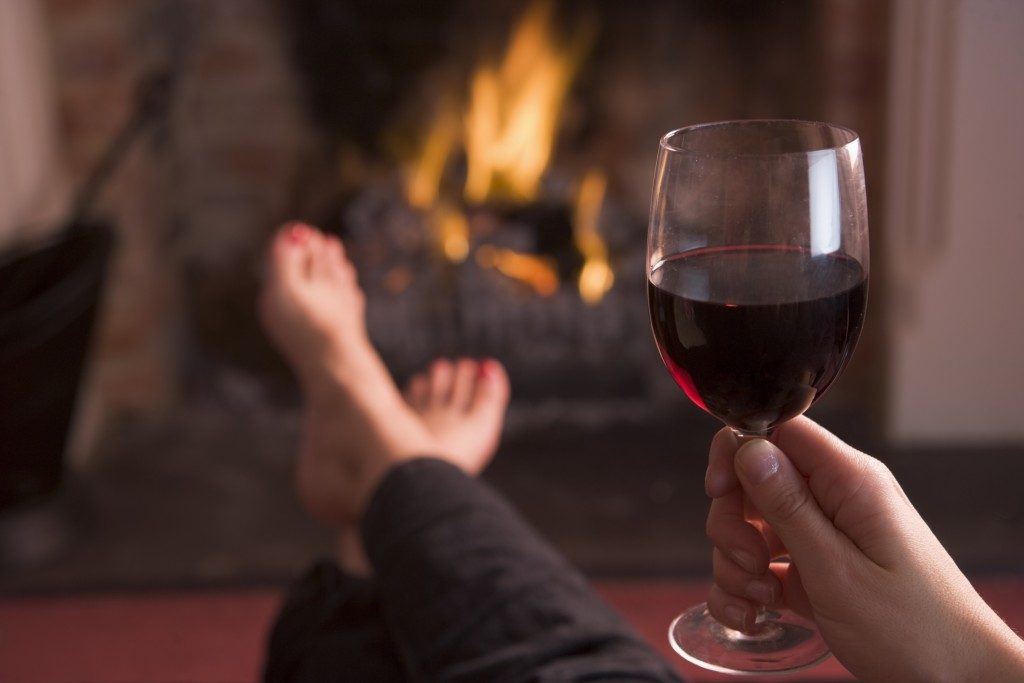
Please chill your whites
By Rebecca Peterson, Staff Writer
Let me preface this by saying: I’m a wine snob.
I love wine. I would cheerfully give my heart, soul, and wallet for a good Tempranillo. I have had conversations, in French, with professional sommeliers about the unusual origins of the Carmenère. I was the kid in high school who brought a Merlot to a house party. I want to marry rich and retire to a winery where I can write novels on a sunlit patio overlooking the fields of vines, a sweet, cool Riesling in hand.
I was very lucky, my family is a clan of wine appreciators, and because wineries are genuinely beautiful destination spots, I got a bit of an education in the field growing up. Not everyone has that.
So if you love wine, like wine, or just want to impress your parents by knowing how to pair your wine with your meals, here is a very brief, very basic education in the wonderful world of wine.
- White wine is served cold. Red wine is not. (There are exceptions to this rule but this is the overall, general accepted practice).
- White wine goes with light meats. Red wine goes with dark meats. The light with light, heavy with dark rule is pretty standard, and helps to narrow down wine choices in terms of pairing with meals. A tomato-based pasta sauce usually pairs best with red, whereas a lighter sauce like alfredo will go better with white.
- You don’t really need to leave wine out to breathe for half an hour. Honestly, if you’re just getting into wine, you won’t notice the difference, and it really depends what wine you’re drinking for it to matter in the first place. You can toss cheap wine into a blender for an intense aerating effect to improve the taste.
- Wine does not last forever once it’s open. For the best taste, you want to finish your wine inside a week. It won’t kill you after that, but it will start to taste like vinegar. Best use for old wine is to toss it in a sauce, gravy, or marinade.
- Cheap wine that you do not buy for taste will cost anywhere from $5–10 a bottle. Cheap wine that you can buy for taste will cost $10–15. Less cheap wine but usually better fare will cost $15–20, good wine can cost anywhere from $20–30, and if you’re reading this article you’re probably a student so anything above that is way too much for you to be spending on wine. Trust me.
- Champagne is sparkling wine that comes from Champagne in France. Prosecco is sparkling wine that comes from Italy. Everything else is just sparkling wine, which can give you a horrendous hangover if you’re not careful, so go easy on the bubbles on New Year’s.
- If you’re finding that you’re getting headaches instantly after drinking red wine, you might have a sensitivity to histamines and tannins, compounds commonly found in wine. Someone might tell you that sulfites are to blame, which is a common myth.
- This is a rule that literally goes back to the Bible, but when you’re serving wine, you drink the best wine first, and the lesser wine This is because your palate is essentially shot after your second glass, and you won’t be able to appreciate good wine the same way. Apparently, the wine Jesus made from water was so good, everyone present at the feast was upset that they hadn’t served it first.
Finally, I leave you with a list of wine recommendations, and my best wishes for your future wine adventures. Cheers, everyone!
Cheap, cheap wines ($5–10 a bottle): Screw-It, Wine O’Clock, Naked Grape, Barefoot. Aim for the Merlots, Pinot Gris/Grigios/Noirs, and Syrahs.
Cheap wines ($10–15 a bottle): Copper Moon, Yellowtail, Apothic, Jackson-Triggs. Copper Moon is very often on sale as it’s a local wine, and can dip below the $10 mark. The Yellowtail Moscato is very sweet, which a lot of new wine drinkers will like. The Apothic Red is one of my favourites. Every Hallowe’en they come out with an Apothic Dark, which I stock up on when I can.
Less cheap wines ($15–20 a bottle): See Ya Later Ranch, Arrowleaf, Kismet, Poplar Grove. See Ya Later Ranch has some amazing whites, especially their sweeter German wines and ice wines. Kismet has a super affordable white, their Saféd, that pairs amazingly with curries.
Expensive wines ($20+ a bottle): Burrowing Owl, Tinhorn Creek, Mooncurser, Inniskillin. The Burrowing Owl Pinot Gris is phenomenally tasty, but I’ve never been able to find it in liquor stores, only direct from the winery itself. Same with the Mooncurser Carmenère, unfortunately. However, these wineries have produced some amazing options for mass distribution, such as the Burrowing Owl Sauvignon Blanc. If you’re going to invest some money in good wine, these are a few wineries to watch out for.
